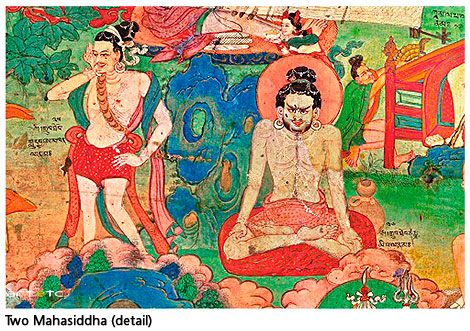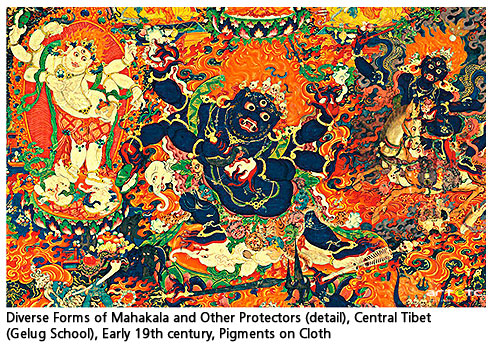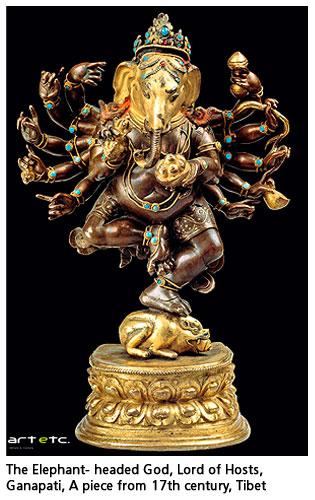- Publisher's Note
- Editorial
- What's Behind This Orange Facade!
- “First you are drawn in by something akin to beauty and then you feel the despair, the cruelty.”
- Art as an Effective Tool against Socio-Political Injustice
- Outlining the Language of Dissent
- Modern Protest Art
- Painting as Social Protest by Indian artists of 1960-s
- Awakening, Resistance and Inversion: Art for Change
- Dadaism
- Peredvizhniki
- A Protected Secret of Contemporary World Art: Japanese Protest Art of 1950s to Early 1970s
- Protest Art from the MENA Countries
- Writing as Transgression: Two Decades of Graffiti in New York Subways
- Goya: An Act of Faith
- Transgressions and Revelations: Frida Kahlo
- The Art of Resistance: The Works of Jane Alexander
- Larissa Sansour: Born to protest?!
- ‘Banksy’: Stencilised Protests
- Journey to the Heart of Islam
- Seven Indian Painters At the Peabody Essex Museum
- Art Chennai 2012 - A Curtain Raiser
- Art Dubai Launches Sixth Edition
- "Torture is Not Art, Nor is Culture" AnimaNaturalis
- The ŠKODA Prize for Indian Contemporary Art 2011
- A(f)Fair of Art: Hope and Despair
- Cross Cultural Encounters
- Style Redefined-The Mercedes-Benz Museum
- Soviet Posters: From the October Revolution to the Second World War
- Masterworks: Jewels of the Collection at the Rubin Museum of Art
- The Mysterious Antonio Stellatelli and His Collections
- Random Strokes
- A ‘Rare’fied Sense of Being Top-Heavy
- The Red-Tape Noose Around India's Art Market
- What Happened and What's Forthcoming
- Art Events Kolkata, January – February 2012
- Mumbai Art Sighting
- Art Bengaluru
- Delhi Dias
- Musings from Chennai
- Preview, February, 2012 – March, 2012
- In the News-February 2012
- Cover
ART news & views
Masterworks: Jewels of the Collection at the Rubin Museum of Art
Issue No: 26 Month: 3 Year: 2012
Antique


Tibetan art is largely unknown to the audience outside the land. The Rubin Museum of Art organizes exhibitions that give a glimpse into the mysterious world of the Tibetan art. The exhibits also include works from Nepal, Bhutan and parts of India, China and Mongolia to give a broader perspective as Tibet, predominantly through Buddhist art, was connected culturally to these countries.
With this aim of preserving the so far unknown art forms of and around the Himalayan region, the museum organized an introductory exhibition titled Gateway to Himalayan Art in 2004. Recently in August, 2011 it has been reopened as a series of rotating exhibitions. One of this series is Masterworks: Jewels of the Collection began on 11th March, 2011 and would continue till 31st December, 2012. The exhibition encompasses a period of thousand years displaying some of the most interesting pieces from the museum’s collection. It consists of the number of Buddhist and Hindu deities depicted in a range of manners and mediums. This arrangement enables the audience to compare exactly where the similarities are and how they are distinctly different from each other.
 Incidentally, one might add that from India – its place of origin, the Mahayana Buddhism traveled through Central Asia via the Silk Route to the Far East. The form, art and iconography of Buddhism went through major transformation thereas local religious beliefs, icons and narratives were incorporated within the tenets of this religion. In India the Mahayana sect already assimilated many Hindu motifs such as figures of gods like Indra and Brahma, the concept of heaven, a pantheon with multiple past and future Buddhas, and motifs from the indigenous non-Aryan Yaksha cult. The Vajrayana or the Tantric Buddhism emerged in the eastern India between the 5th and 7th CE. Finally, in the 7th century, Buddhism traveled to Tibet. Thus the Tibetan form of Buddhism shows influences of at least four major religions including those from the various other Buddhist sects. It is indeed intriguing for the audience to be able to trace the similarities and dissimilarities in terms of iconography, motifs and narratives as demonstrated in the works displayed in the exhibition. Curated by Christian Luczanits, Masterworks: Jewels of the Collection presents life-size facsimiles of an entire sequence of murals from the Lukhang, the Dalai Lamas' Secret Temple near the Potala Palace in Lhasa, Tibet, providing an exceptional opportunity for viewing Himalayan art at its most lavish. The original eighteenth-century wall paintings--inaccessible to the public until the late twentieth century--uniquely depict the most esoteric of meditation and yoga practices in vivid colour and detail.
Incidentally, one might add that from India – its place of origin, the Mahayana Buddhism traveled through Central Asia via the Silk Route to the Far East. The form, art and iconography of Buddhism went through major transformation thereas local religious beliefs, icons and narratives were incorporated within the tenets of this religion. In India the Mahayana sect already assimilated many Hindu motifs such as figures of gods like Indra and Brahma, the concept of heaven, a pantheon with multiple past and future Buddhas, and motifs from the indigenous non-Aryan Yaksha cult. The Vajrayana or the Tantric Buddhism emerged in the eastern India between the 5th and 7th CE. Finally, in the 7th century, Buddhism traveled to Tibet. Thus the Tibetan form of Buddhism shows influences of at least four major religions including those from the various other Buddhist sects. It is indeed intriguing for the audience to be able to trace the similarities and dissimilarities in terms of iconography, motifs and narratives as demonstrated in the works displayed in the exhibition. Curated by Christian Luczanits, Masterworks: Jewels of the Collection presents life-size facsimiles of an entire sequence of murals from the Lukhang, the Dalai Lamas' Secret Temple near the Potala Palace in Lhasa, Tibet, providing an exceptional opportunity for viewing Himalayan art at its most lavish. The original eighteenth-century wall paintings--inaccessible to the public until the late twentieth century--uniquely depict the most esoteric of meditation and yoga practices in vivid colour and detail.